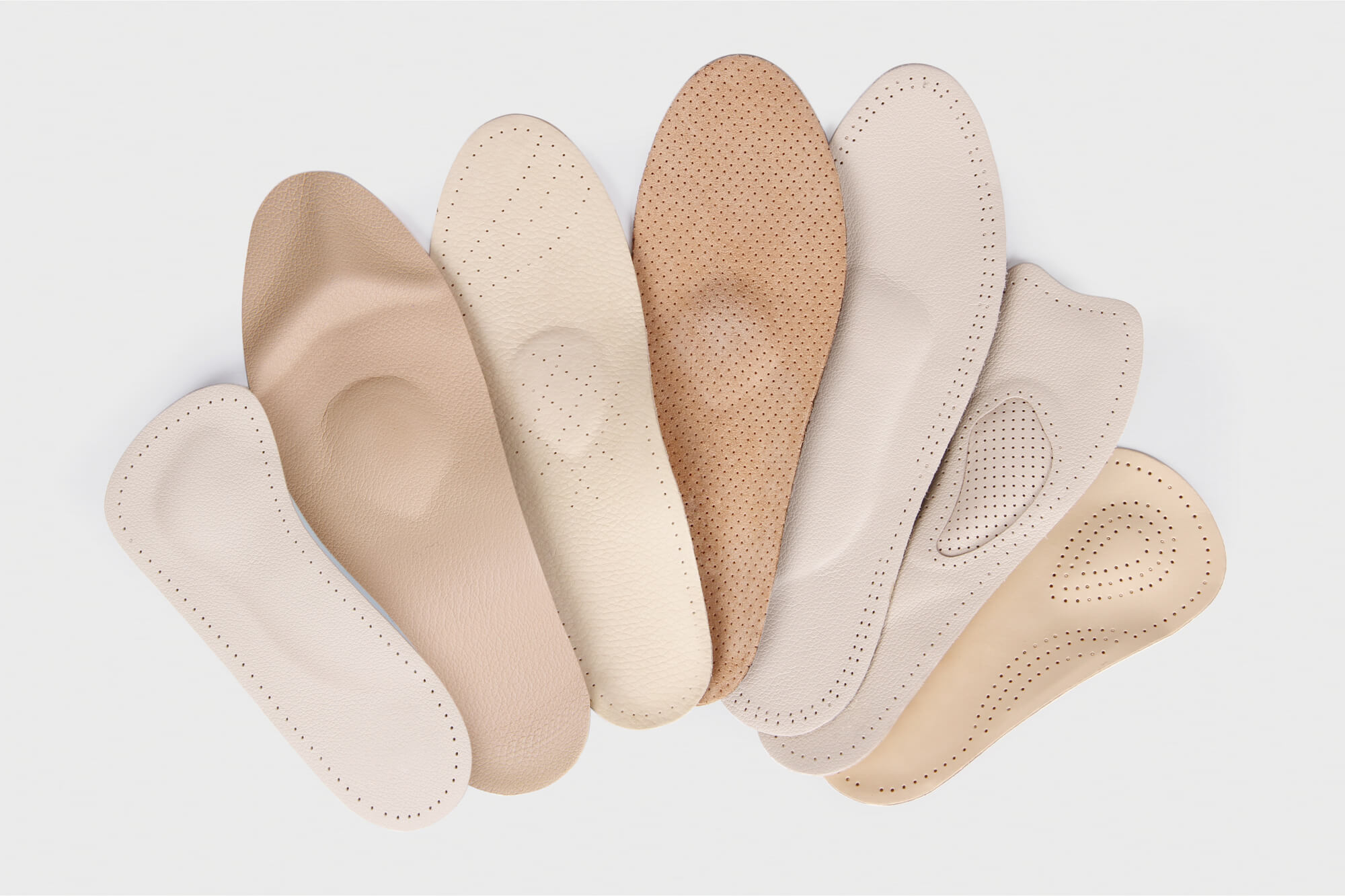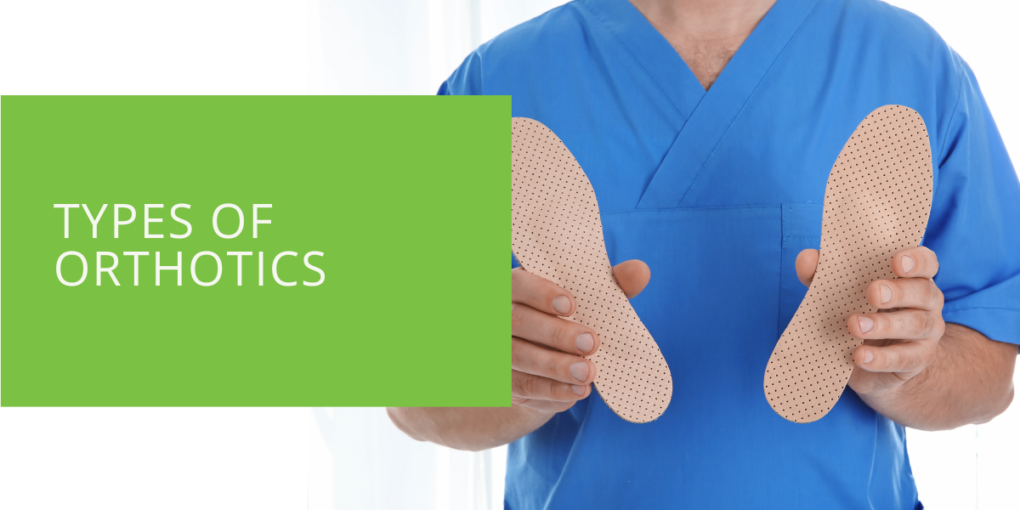Types of Orthotics
Orthotics are crucial in providing support, alignment, and pain relief when addressing foot and ankle issues. Understanding the various types of orthotics available can help individuals find the most suitable solution for their specific foot problems. This article will explore the different types of orthotics, their applications, and how they can enhance foot health. Discovering the right orthotic can significantly improve your daily comfort and mobility, whether dealing with plantar fasciitis, flat feet, or other foot conditions.
What Are Orthotics?
Orthotics, or orthoses, are devices designed to support and align the feet, ankles, and lower limbs. They commonly treat foot and ankle conditions, alleviate pain, and improve biomechanical function. Orthotics can range from simple shoe inserts to custom-made devices tailored to an individual's unique foot structure and needs.
Common Types of Orthotics
Custom Orthotics
Custom orthotics are specially crafted to meet the specific requirements of an individual's feet. They are created based on a thorough assessment conducted by a qualified podiatrist. Custom orthotics provide precise support and correction for various foot problems, ensuring optimal alignment and function. Whether you have arch issues, heel pain, or gait abnormalities, custom orthotics can address your specific concerns effectively. These orthotics are typically made from high-quality materials and are built to last, providing long-term support and comfort.
Shoe Inserts or Insoles
Shoe inserts, or insoles, are pre-made orthotics that can be purchased over the counter or online. They are designed to fit inside regular shoes and provide additional cushioning, arch support, and shock absorption. Shoe inserts often alleviate common foot problems such as flat feet, plantar fasciitis, and general foot pain. While they may not offer the same level of customization as custom orthotics, they can still provide significant relief for mild to moderate foot issues.
Ankle-Foot Orthosis (AFO)
Ankle-Foot Orthosis (AFO) is an orthotic device extending from below the knee to the foot and ankle. It often treats ankle instability, foot drop, and gait abnormalities. AFOs provide support, stability, and improved mobility by controlling ankle and foot motion. These orthotics come in different designs, including rigid AFOs made of plastic or carbon fiber and hinged AFOs that allow controlled movement.
Diabetic Foot Orthotics
Individuals with diabetes require specialized foot care, and diabetic foot orthotics are specifically designed to meet their unique needs. These orthotics provide cushioning and pressure redistribution to prevent ulcers, reduce the risk of foot complications, and promote overall foot health. Diabetic foot orthotics are typically made of soft, accommodative materials to minimize friction and pressure points, ensuring maximum comfort and protection.
Spinal Orthotics
Spinal orthotics, also known as back braces or supports, are designed to provide spine stability, support, and immobilization. They commonly treat conditions such as scoliosis, spinal fractures, and postoperative rehabilitation. Spinal orthotics help maintain proper spinal alignment, reduce pain, and promote healing. These devices are typically custom-fitted to ensure an accurate fit and optimal support.
Arthritic Foot Orthotics
Arthritic foot orthotics are designed to alleviate pain, reduce joint stress, and improve mobility for individuals suffering from arthritis in the feet or ankles. These orthotics provide cushioning and support to the affected joints, helping to relieve pain and improve overall function. Arthritic foot orthotics often incorporate materials with shock-absorbing properties, such as gel or foam, to provide cushioning and reduce the impact on arthritic joints. They can also feature specialized arch supports and modifications to accommodate deformities commonly associated with arthritis.
Prosthetic Orthotics
Prosthetic orthotics are designed for individuals who have experienced limb loss or congenital limb deficiencies. These orthotics are custom-made to fit the residual limb and provide support, stability, and functionality for individuals using prosthetic limbs. Prosthetic orthotics help optimize the fit and alignment of the prosthetic limb, enhancing mobility and restoring a sense of normalcy for individuals with limb loss.

Choosing the Right Orthotic for Your Needs
Selecting the appropriate orthotic for your needs is crucial for optimal foot health and function. When choosing an orthotic, consider the following factors:
- Foot Condition: Identify the specific foot problem you are experiencing, whether it's related to arch support, heel pain, or biomechanical abnormalities.
- Professional Consultation: Consult a qualified podiatrist who can assess your feet, analyze your gait, and recommend the most suitable orthotic for your condition.
- Customization: Custom orthotics offer the highest level of customization, ensuring a precise fit and tailored support for your feet. However, over-the-counter orthotics can still benefit mild to moderate foot issues.
- Material and Durability: Consider the materials used in the orthotics and their durability and longevity. High-quality materials will provide better support and last longer.
- Lifestyle and Activities: Consider your lifestyle and the activities you engage in regularly. Certain orthotics may be more suitable for athletic activities, while others are designed for everyday comfort and support.
By carefully considering these factors and seeking professional guidance, you can choose an orthotic that will effectively address your foot concerns and improve your overall health.
How Orthotics Work in Conjunction with Proper Footwear
While orthotics play a crucial role in supporting and aligning the feet, it is essential to understand that they work best when paired with proper footwear. The synergy between orthotics and appropriate footwear can significantly enhance their effectiveness. Consider the following tips:
- Accommodating Design: Ensure that your shoes have enough space to accommodate the orthotics comfortably without causing any constriction or discomfort.
- Supportive Structure: Look for shoes with good arch support, cushioning, and stability. This will complement the support provided by the orthotics and promote proper alignment.
- Appropriate Shoe Size: Always wear shoes that fit well and provide ample room for your toes to move freely. Ill-fitting shoes can undermine the benefits of orthotics and lead to discomfort or pain.
- Orthotic Adjustments: Follow the recommendations of your podiatrist regarding orthotic adjustments and modifications. They may suggest specific modifications to your footwear to optimize the fit and function of the orthotics.
Remember, the combination of orthotics and appropriate footwear creates a solid foundation for improved foot health, enhanced comfort, and reduced pain.
Conclusion
Understanding the different types of orthotics available and their specific applications is crucial for individuals seeking to address various foot conditions. Whether you require custom orthotics, shoe inserts, ankle-foot orthosis, or specialized orthotics for specific conditions like diabetes or arthritis, there is a solution that can significantly improve your foot health and overall quality of life. Consult with a qualified podiatrist to determine the most suitable orthotic for your needs and enjoy the benefits of enhanced support, pain relief, and improved mobility. Take the first step towards healthier feet and a more active lifestyle today!
Key Takeaways
- Orthotics come in various types, including custom orthotics, shoe inserts, ankle-foot orthosis, diabetic foot orthotics, spinal orthotics, arthritic foot orthotics, and prosthetic orthotics.
- Choosing the right orthotic involves considering factors such as foot condition, professional consultation, customization, material and durability, and lifestyle and activities.
- Orthotics work best when paired with proper footwear that accommodates them, provides support and stability, fits well, and allows for orthotic adjustments if needed.

